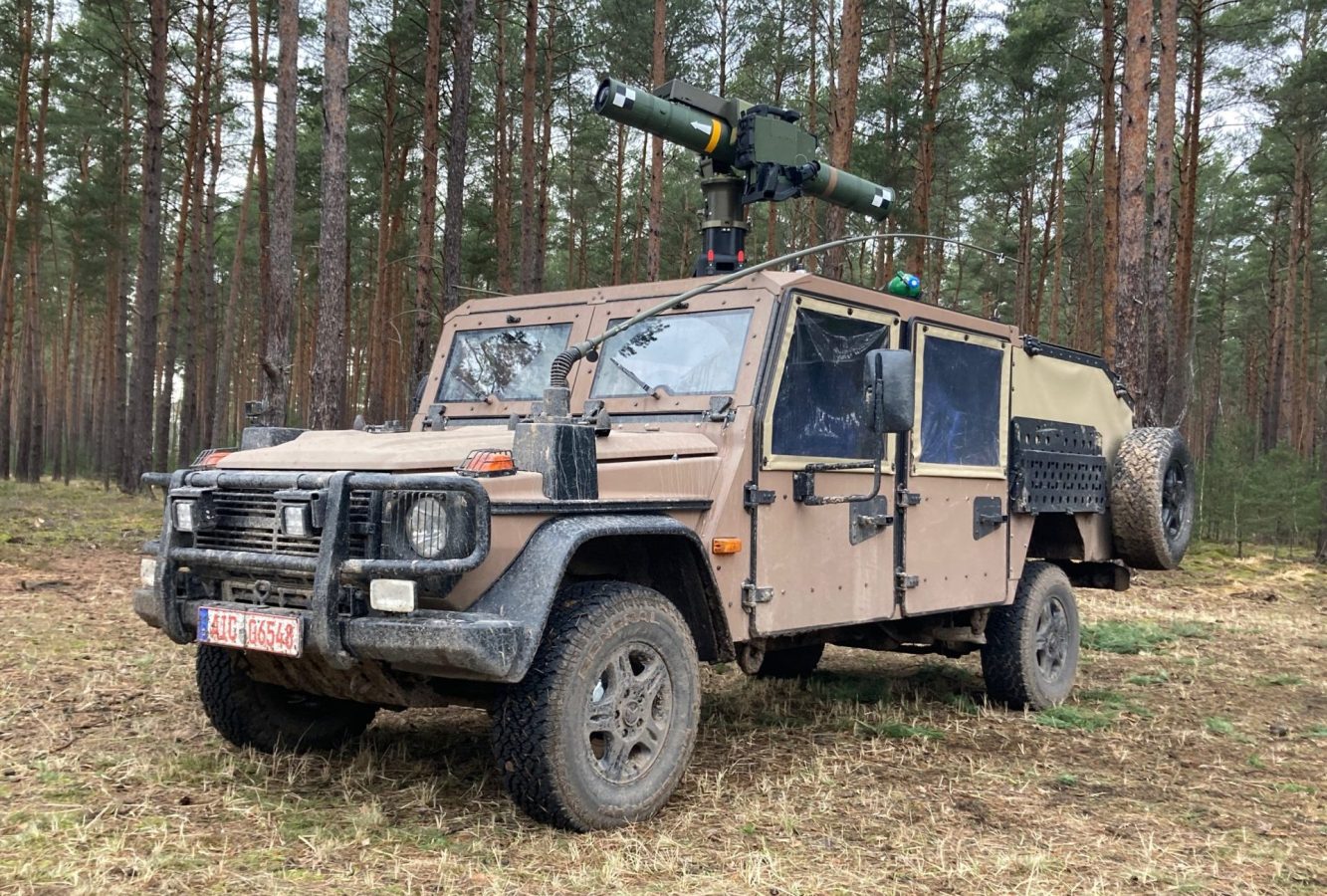Bavarian company Armored Car Systems GmbH (ACS) has developed an anti-tank variant of the Enok AB airborne vehicle (AB stands for airborne). Called the Tankhunter, the vehicle is now entering series production, Sebastian Schaubeck, Managing Director of ACS, has confirmed to ESD.
Based on a request from a European customer, the variant was developed to series maturity in just 12 months so that production of the 60 vehicles ordered can now begin.
Schaubeck points out that the in-house-developed modular aluminium frame for the Mercedes-Benz G-models employed by the Enok AB was the reason for the rapid development of the quite-demanding conversion kit. The ACS aluminium frame, which ensures weight reduction and offers flexibility for the development of conversion kits, is not only used in the Enok AB, which is based on the previous G 461 G-model platform, but can also be used in combination with the latest version of the G platform: the G 464. The Caracal airborne vehicle family, for example, is based on this model, with which the trio of ACS, Rheinmetall and Mercedes all entered the competition to provide the future airborne vehicle of the German and Dutch parachute troops.

The Tankhunter is built on the G 461 platform with a long wheelbase. The long wheelbase is necessary in order to be able to offer the vehicle a sufficiently dimensioned loading area, as the Spike weapon system used in the conversion kit from the Israel’s Rafael can fire both Spike LR and the longer-range Spike ER anti-tank missiles. According to Schaubeck, several anti-tank missiles are stored in a modular and shock-resistant manner in the cargo hold of the vehicle.
The crew of the Tankhunter consists of four soldiers: the driver, the commander, the gunner and the loader/ammunition gunner. The gunner operates the Spike weapon system from a rotating ring mount. Important for an airborne vehicle, the anti-tank conversion kit is fully air-transportable. After unloading from the aircraft, the weapon system can be rapidly brought from transport to combat mode by the crew in just a few movements using hinges.
The vehicle’s cargo hold is connected to the fighting compartment and has a fireproof folding roof. According to Schaubeck, the fire resistance in combination with the slanting of the rear part of the cargo hold is necessary for safety reasons and serves to protect the vehicle and the crew. In the unlikely event of a misfire and the missile failing to leave the launcher, the jet from the Spike’s rocket motor would otherwise damage the vehicle.
| Possible anti-tank guided missile armaments for the Tankhunter | |
| Type | Range |
| Spike LR 1 | 4 km |
| Spike LR 2 | 5.5 km |
| Spike ER | 8 km |
| Spike ER 2 | 10 km |

The aluminium frame used for the Enok AB follows a modular concept and therefore not only allows the easy use and development of different conversion kits, but also enables the same vehicle to be used open, closed or ballistically protected.
Waldemar Geiger



